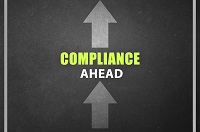
Brian T. McCall, CPA, CGFM
Partner
With the significant amount of new federal funding being allocated to governments and non-profits in the Commonwealth, we would like to highlight key changes to procurement and purchasing rules under Uniform Guidance that will impact your organization.
What is Uniform Guidance and when does it apply?
Uniform Guidance is the rules and requirements for all recipients of federal funding, whether received directly from the federal government, or passed through from a state or other agency. It discusses what administrative policies are required, how the grant must be managed, which costs are allowable, as well as audit requirements, amongst many other rules and regulations. If you received federal funding as a result of the ongoing pandemic, odds are that the regulations set forth in Uniform Guidance apply to you, even though certain regulations were relaxed as a result of the pandemic.
So the basics first – what does Uniform Guidance say about procurement?
Uniform Guidance (2 CFR §200.317-320) sets forth the allowable methodologies for procurement when using federal funds to purchase property or services. It requires written procurement policies. Some key existing components as well as changes from prior guidance are described below.
- Micro Purchases (those purchases less than $10,000 – previously was $3,500)
- No requirement for soliciting competitive pricing, as long as you consider the price reasonable based on research, experience, purchase history or other information.
- You can now adjust the $10,000 limit to up to an amount as high as $50,000 under the updated rules released in late 2020.
- Small Purchases (those purchases between $10,000 and $250,000 – previously was between $3,500 and $150,000)
- Higher than the micro-purchases threshold, but does not exceed the Simplified Acquisition Threshold (SAT) of $250,000
- Price or rate quotations must be obtained from an adequate number of qualified sources as determined appropriate by your entity.
- Formal Procurement (greater than $250,000, previously was $150,000)
- Requires sealed bids or requests for proposals.
What has changed regarding purchasing/procurement?
The standards regarding purchasing/procurement have been revised in two main areas – certain purchasing thresholds have been updated as described above. But additionally, it now allows for non-federal entities to have more flexibility over setting an appropriate “micro-purchase” threshold, up to $50,000 without approval by a cognizant agency.
What are the benefits to adjusting this micro purchase threshold?
This option could allow your entity to update and streamline your procurement policies to better address the overlapping requirements between local, state, and federal procurement rules. This could also help to ensure compliance by removing some confusion as to which requirements apply.
We would advise to first look at your existing internal policies and any state or local requirements, and why the limits are set as they are. Regardless of outside limits, your organization should be comfortable with its policies based on the current internal controls structure. Once you know your “ideal” limits, begin to factor in any local/state requirements and these federal requirements. This process should allow you to base your decision on what is reasonable to allow for appropriate review to ensure purchases are made responsibly, while reducing administrative burden.
Are there any other key differences between state and federal requirements regarding purchasing I should be aware of?
You should be aware that the use of purchasing cooperatives such as COSTARS only count as one quote for federal purposes in most cases. With the current influx of federal funds, much of which are focused on capital purchases and projects, you might be looking at a $275,000 purchase through COSTARS. As this is above $250,000, this would fall under the federal requirements for a sealed bid or RFP, even though you might have complied with all state and local requirements.
The question has been raised to the federal government about adjusting the federal rules to consider such situations. There is currently no update, but we will keep you apprised of the situation should it change.
What are some examples of how all of this could impact my organization?
If your local government is a 2nd class Township looking to purchase a used vehicle that will cost $15,000, under the 2nd Class Township code in Pennsylvania, it requires 3 quotes since the purchase threshold is over $10,000. In this case, the Township code matches the current federal micro purchase threshold of $10,000 requiring quotes. You likely wouldn’t want to adjust your federal micro purchase threshold.
But – if you were the same Township, perhaps looking at an equipment purchase of $23,000, and you plan to use federal funds, the option of purchasing this equipment directly from a purchasing cooperative, and under Township Code requirements would be fine. However, under the federal requirements, you need to get “a reasonable number of quotes” since the purchasing cooperative only counts as one price. Maybe it would then make sense to adjust your federal micro purchase threshold up to $30,000, to avoid any federal compliance issues in similar circumstances.
If you are a non-profit organization, your current policy may require certain additional processes/controls to occur at $15,000 (getting quotes, secondary internal approval, etc.). Questions to ask are
- Should you adjust that amount down to $10,000 to match the federal micro-purchase threshold?
- Should you go the other direction, and self-certify to adjust your federal micro purchase threshold up from the default of $10,000 to $15,000, thereby making your policies streamlined across federal and non-federal dollars?
I do want to make a change – what are the considerations and steps to do this?
You must self-certify the raised threshold on an annual basis, and you must maintain documentation to be made available to your grantors and auditors. The self-certification must include a justification, clear identification of the threshold, and supporting documentation of any one of the following:
- Qualify as a low-risk auditee per the most recent audit,
- Perform an annual internal institutional risk assessment to identify, mitigate, and manage financial risks,
- For public institutions a higher threshold consistent with state law (PA rules are generally more restrictive, not less).
Conclusion
As with all rules, there are some specific exceptions and carve outs to the above requirements. We encourage you to review 2 CFR §200.317 – .320 in its entirety to obtain further clarification on these recent changes and existing requirements, to ensure full compliance while maximizing efficiency in working with both state and federal purchasing requirements.


